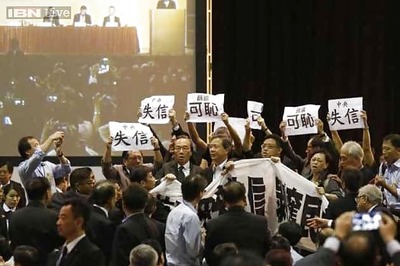
views
The rapid urbanization of the Indian cities has brought forward a plethora of issues and challenges. It has become inevitable that the sound principles of sustainable development as mentioned in the Brunt land report i.e. social, economic and environmental must become the essence of any future growth.
The United Nations Habitat report on climate change noted that cities are not investing adequately in tackling climate change, and unplanned urbanization has led to environmental degradation. In Indian context, the Smart Cities initiative is a step towards habitations where the man kind can not only survive but also thrive through improved quality of life and wellbeing.
With waste, water, energy and social factors being given substantial emphasis, green rating systems inherently ensure that the cities provide sufficient amenities, have innovative urban planning systems, and achieve better land use, spatial concentration and infrastructure design. There is no singular solution to all challenges. Every city is different with its own history, culture and policies. Being the indigenous rating system of India, GRIHA provides contextual solutions to challenges faced by the Indian cities.
The Government is being proactive and visionary to develop smart cities and exponential development is happening in services and construction technologies.
However, the design approach to the sustainable cities of the future is an iterative thought process from macro to micro level. An integrated design process with involvement of urban planners, architects, engineers, environmentalists and the residents of the city must be the foundation of such development.
With few proposed capital cities, India has a chance to evolve comprehensive design strategies based on minimum land and resource use. Instead of imitating the glossy western cities, the emphasis must be on developing a city which is weaved into the Indian fabric and caters to the regional, climatic and temporal idiosyncrasies of our country.
Presently, the cities cover less than 2% of the planets’ surface but consume 78% of the world’s energy. So substantial focus is required to minimise the energy use through efficient system designs, less system losses and harnessing the renewable energy sources.
However, designing climate responsive buildings is of vital importance to minimise damage to the environment.
The existing buildings have become resource intensive. Green and intelligent retrofitting will ensure better performance and energy savings.
The damage caused to our fresh water and underground reservoirs due to human intervention is unfathomable. On one hand, we are running out of land and at the same time landfills are increasing at a fast pace. Cradle to cradle system loops should be envisioned and devised at city level for each and every element such as waste and water. The change has to start from within so a parallel drive to change the mind-sets of the citizens is crucial. A city can only be green when its citizens lead a sustainable lifestyle.
The design of the city should evolve around the movement of its residents.
Transport linkages are the arteries of any city. Providing efficient transportation channels along with effective mass – transportation systems result in less CO2 emissions, decreased traffic congestion and better flow of traffic.
Now, the challenges of climate change are not a phenomena of distant future but have become a critical issue to be dealt with right now. There has been an exponential increase in natural and manmade disasters. A comprehensive disaster management plan and post disaster re- settlement strategies must be an integral part of the future cities to circumvent another Chennai incident.
India has a strong framework of policies and codes in place to enable green development. Nonetheless efficient implementation has always been an issue.
GRIHA has always stressed on the importance of “what gets measured, gets managed”. So Strict building bye laws, enforcing Energy Conservation Building Code, regular energy and water audits, metering and monitoring is vital for future cities.
The ambitious plans of smart cities can be crystallized with the help of qualified sustainability professionals only. Understanding the criticality of the issue, GRIHA Council has been doing workshops and training programs for professionals and students; who will be empowered to work towards a greener future.
The path ahead is complex and daunting. A diverse range of issues and challenges have to be dealt with categorically and comprehensively. However, one must not be intimidated by the scale of the issues and move towards a sustainable city focusing on inclusive development, the aspirations of residents and their right to a better quality of life.
(The author Ashu Dehadani is the Project Officer, GRIHA Council. The views presented are her personal opinion and not that of CNN-IBN/ IBNLive)


















Comments
0 comment